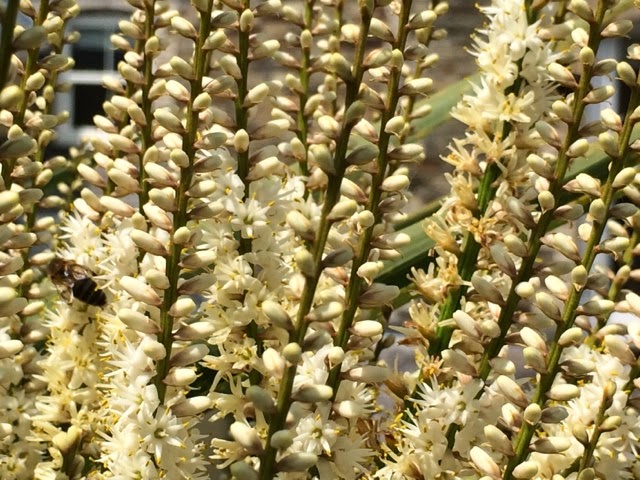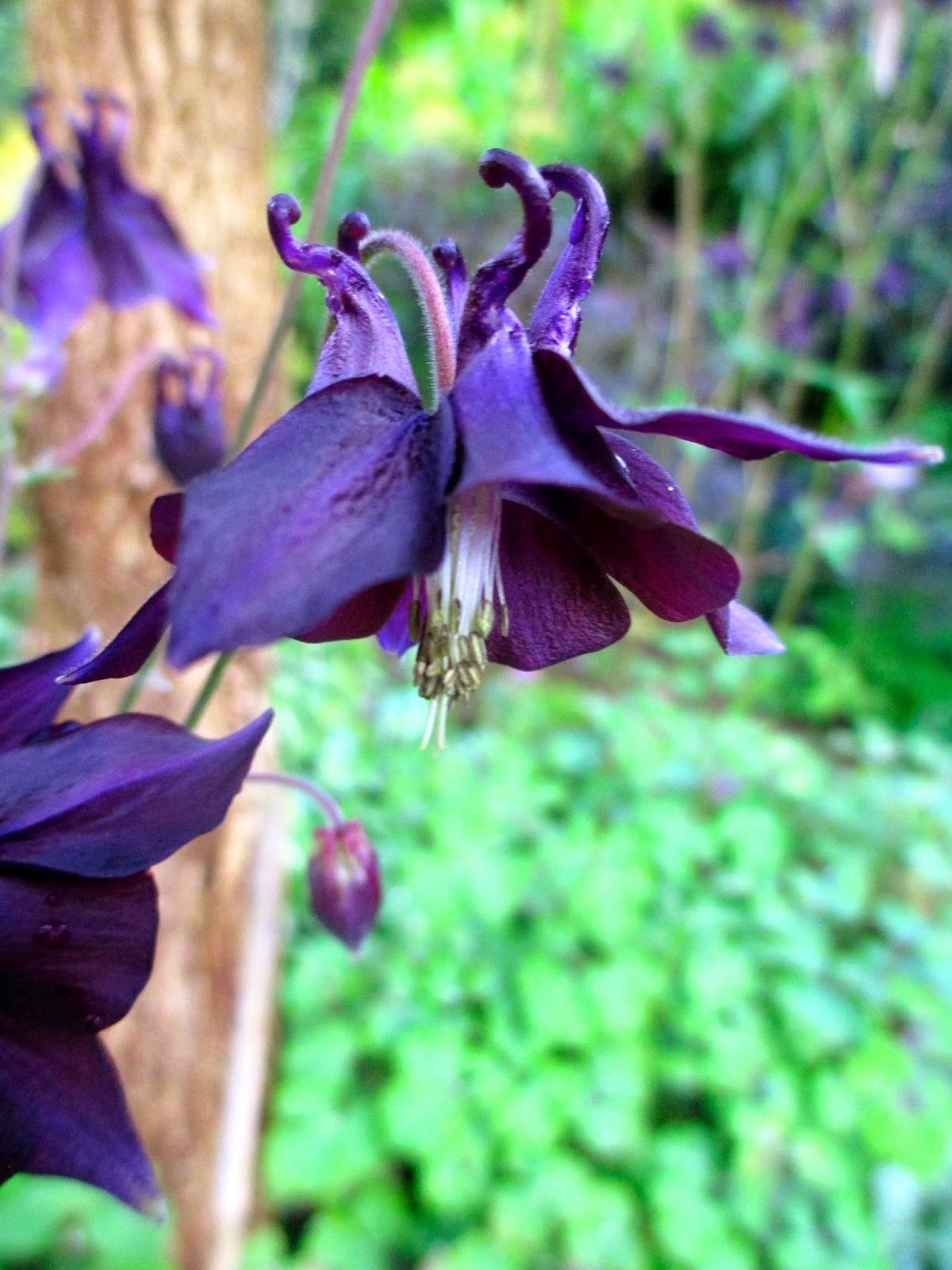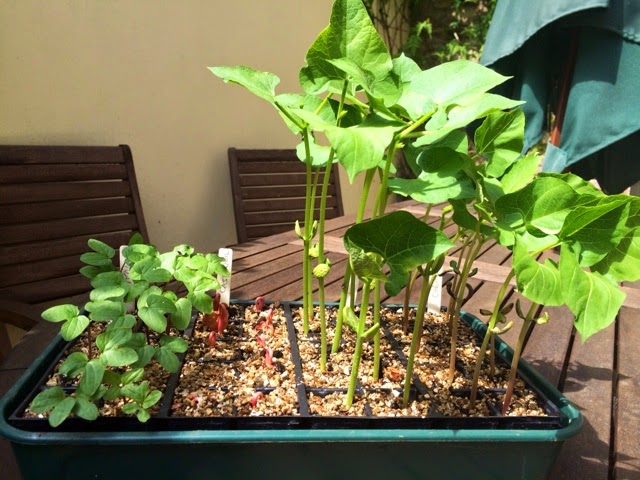...and they are so easy to grow, in fact quite hard to stop!
'Flowering in my garden' at the moment are 2 of my favourite perennials. they provide a riot of colour and spread themselves about to fill in unintentional gaps in your borders (not to mention any intentional gaps, paths and pots!). The only thing required with these plants is a bit of control (I'm famously bad at this, you only have to look at my garden, I have no idea how to control anything!)
Consequently the collection of no 23 Aquilegia in my garden is growing slightly alarmingly but they are so beautiful that I can't bring myself to be stern with them. Their common names include Columbine and Granny's bonnet and you can see why.
The only one that I actually planted about 4 years ago was this really dark one...
and now I have them in shades of purple...
and even dark pink...
through to pale pink!
Which is quite clever for a plant to manage I think. The lovely, dainty, fluted flowers are held on graceful, tall stems which sway elegantly in the breeze, looking like beautiful fairy party dresses just like in the book from my childhood
Flower Fairy Alphabet, or fairy bells!
The buds come first with their fat promise and their weird twisty-ness, followed by the flowers and then...
the whole reason for the need for control - the seed head. These are equally graceful and elegant BUT, they are also full of zillions of tiny black shiny seeds, that get everywhere! So whisk them off before they dry and go brown and you can stop (ha! ok, maybe slow down) the world domination of the Aquilegia and it's constant reinvention of itself.
My Aquilegia are of the common variety, vulgaris, and semi-wild but Aquilegia are bred in every colour and size. There are alpine ones, which tend to be more dainty, larger flowered ones, doubles, ones with longer curlier horns/spurs, ones with no horns/spurs and bi-coloured ones. All of them will grow pretty much anywhere that has some sun and is reasonably drained. Their self seeding is a bonus, but remember if you start off with the more exotic hybridised versions, the chances are that over time they will revert and cross with what's around them and quite probably end up looking like the ones above!
Here are some alpine ones I grew from seed last autumn (left) and some Lime Sorbet that I planted this year (right). Come on you two - get moving!!! Who knew they would grow this slowly, I might just revert to leaving the wild ones to do their thing instead.
(yes that is rain, the poor things are almost battered flat or washed away!)
Next is a plant with many of the same characteristics as the Aquilegia but a very different flower.
No 24 Thalictrum, or meadow rue, has very similar leaves to the Aquilegia and tall elegant stems.
It is also flowering at the moment but the flowers are altogether much fluffier!
This pale lilac one grows in front of my Black Sambucus and contrasts beautifully...
and this brighter one is shorter and looks lovely amongst it's own bright green foliage.
These are Thalictrum aquilegifolium (there is the clue to the similarities to the Aquilegia I've described!) and I would love a
Thalictrum delavayi, which is taller and even more gorgeous.
Thalictrum are slower growing than their relatives, Aquilegia, and less all-conquering (at least they have been so far, but then I only planted them last year!) but they do self seed. They are not choosy about soil type but prefer not to be parched by hot sun. So my semi shaded, cooler border should be perfect!
Given a level playing field (or garden border) I wonder who would win in an Aquilegia Thalictrum flower off. We'll have to wait and see!



























